Convert QFX to CSV/Excel
Need to work with bank or credit card transactions stored in an QFX file but cannot open it in Excel as a table with transaction? Excel or Google Sheets or another spreadsheet app does not work with QFX files directly.

The Solution: try ProperConvert (QFX2CSV) app. It can convert your transactions into a format from QFX to CSV/Excel.
Convert transaction QFX files to the CSV/Excel format
- ProperConvert (QFX2CSV) extracts transactions from QFX files. It creates CSV/Excel files ready to import into Excel, Quicken for Mac, Quickbooks Online.
- No data entry: convert data you already have in bank, credit card or investment transactions file format to the CSV/Excel format
- Smart: ProperConvert (QFX2CSV) understands many layouts. It finds columns like date, amount, description, etc. of your transactions.
- Easy to use: Converting your banking transactions into CSV/Excel files could not be any easier. In a few clicks, you will have all your transactions converted to importable by Excel, Quicken for Mac, Quickbooks Online format in no time at all.
- Free trial and support: try it for Free before you buy and receive full support before and after you order.
- Safe to use: ProperConvert (QFX2CSV) converts all your banking transactions on your computer.
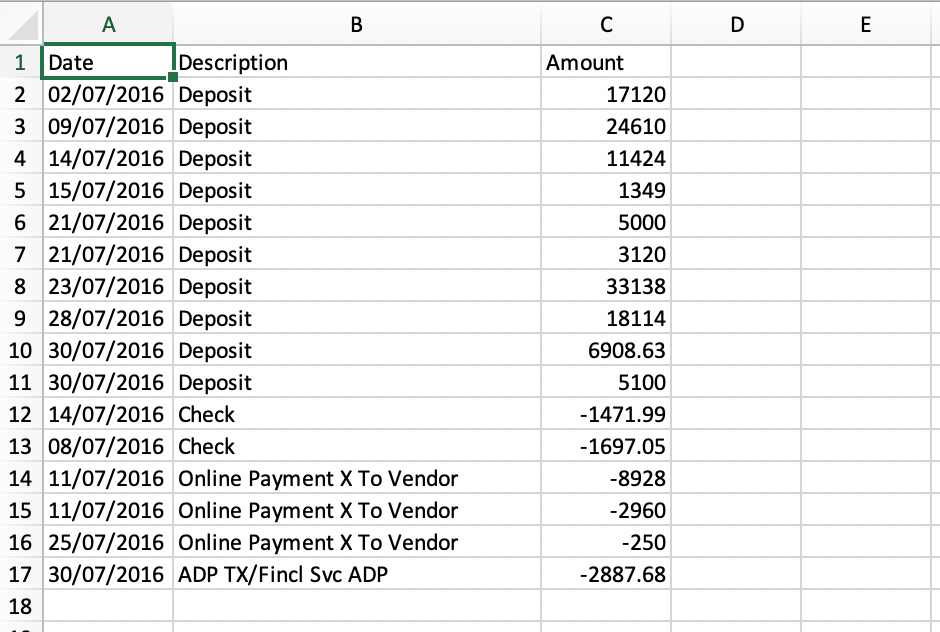
How can I use ProperConvert (QFX2CSV) to convert transactions from QFX format?
- Download, install and run the software
- Select a QFX file with transactions and review transactions
- Backup your accounting software file before importing any file
- Click Convert to convert QFX to a CSV/Excel file
- Import created file to Excel, Quicken for Mac, Quickbooks Online
Convert QFX to CSV or Excel format (QFX2CSV)
This tutorial shows how to convert a QFX file from your bank or credit card statement to CSV format and import into Quickbooks Online (QBOnline), Excel, Xero.
Use the ProperConvert app to convert QFX to CSV. Other formats are supported as well.
Step by step instructions for Windows
Follow the steps below for the Windows version, followed by the Mac version.
Make sure you are using the latest version of QFX2CSV. Download it from the QFX2CSV download page. Start QFX2CSV and select a QFX file.
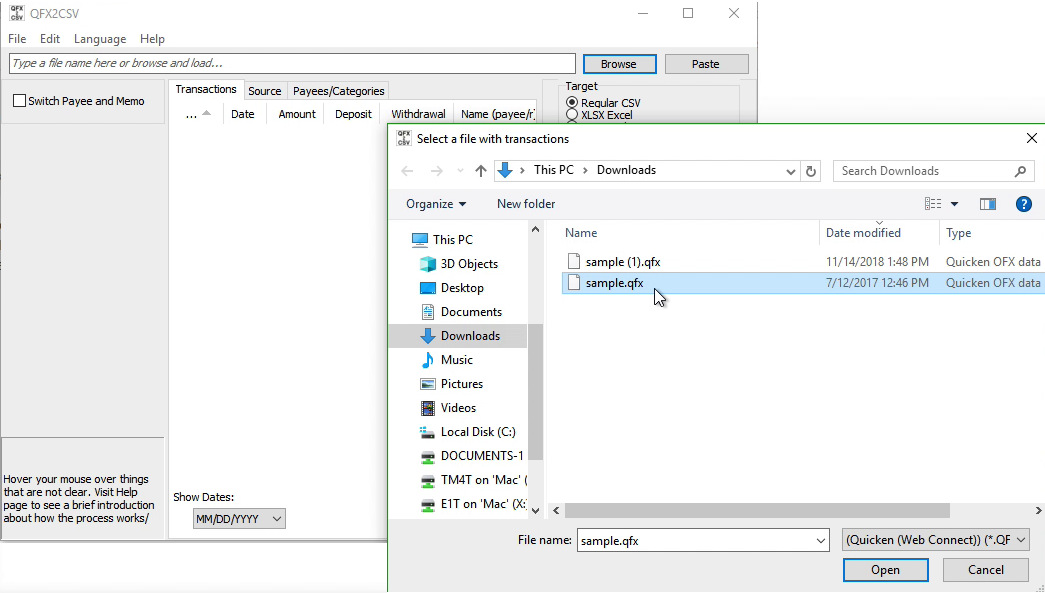
Review transactions before converting. Check that dates are correct, have the correct year, amount, withdrawals, and deposits are shown in corresponding columns.
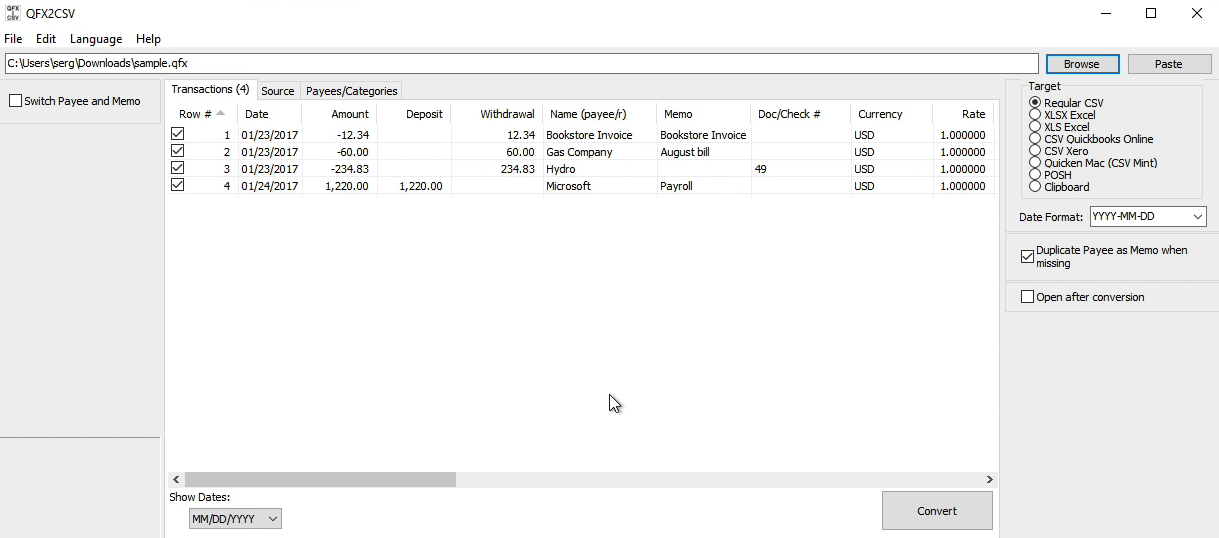
Choose the CSV target: Regular CSV, Excel (XLS or XLSX), Quickbooks Online, Xero, Quicken for Mac (CSV Mint), POSH or copy to clipboard to be pasted into any spreadsheet software like Excel.
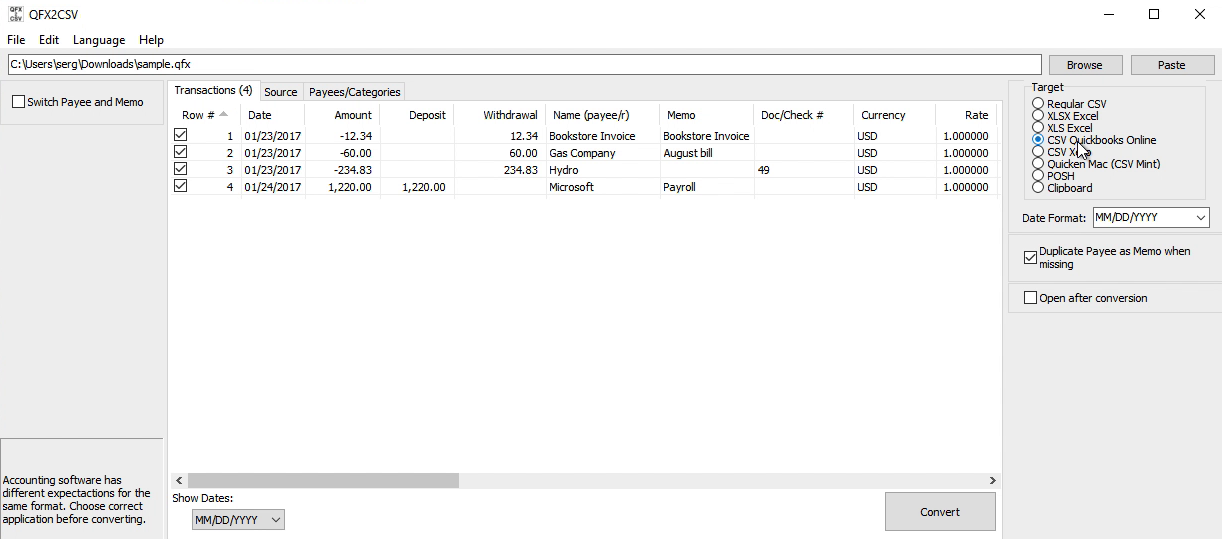
Set 'Open after conversion' to open application handling converted files to start import right after the conversion.
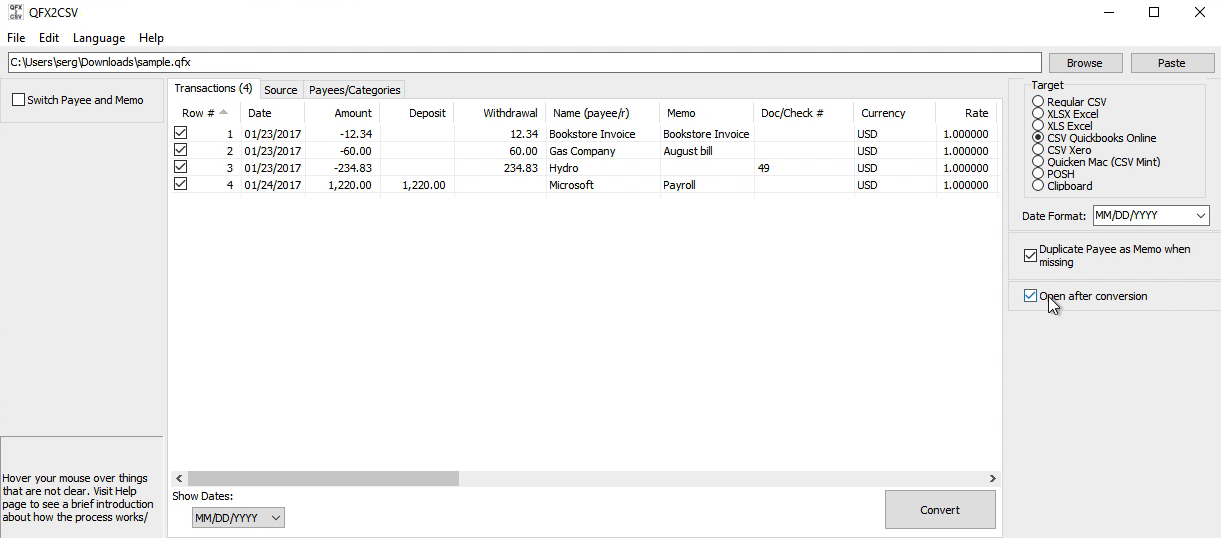
Click the 'Convert' button to create a CSV file.
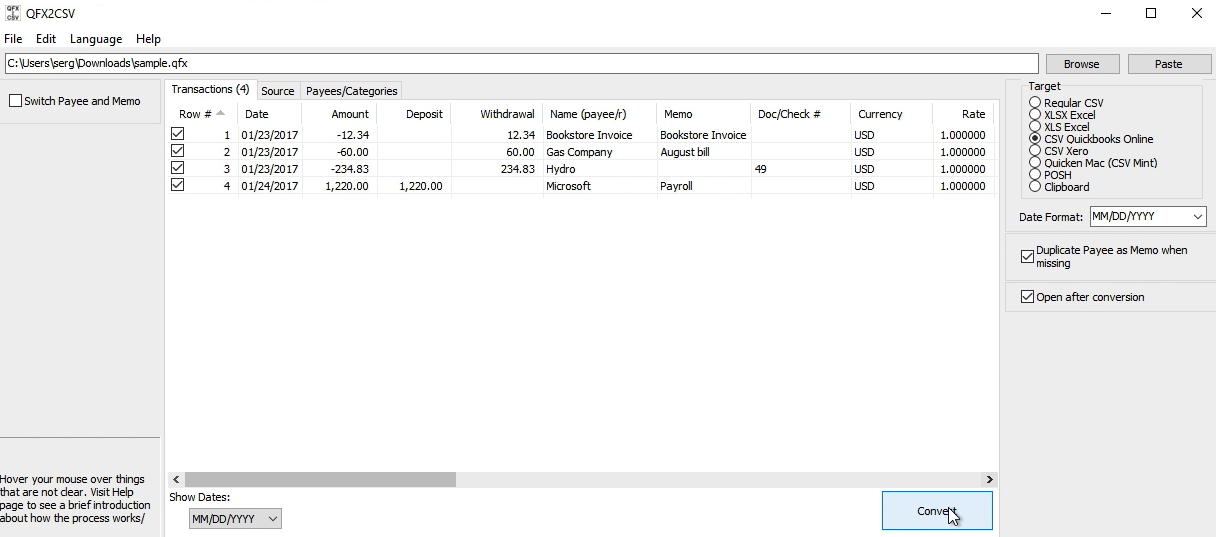
Confirm the file name and location.
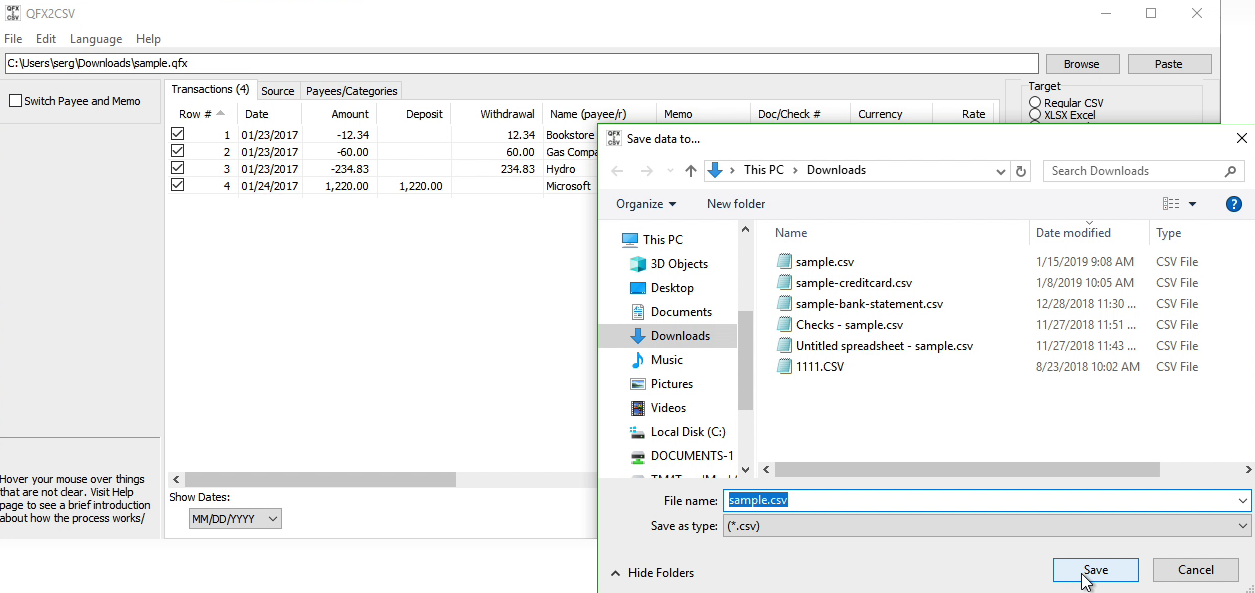
Now the CSV file is created.

Review created CSV file and import it into Quickbooks Online, Xero or work with the file in Excel.
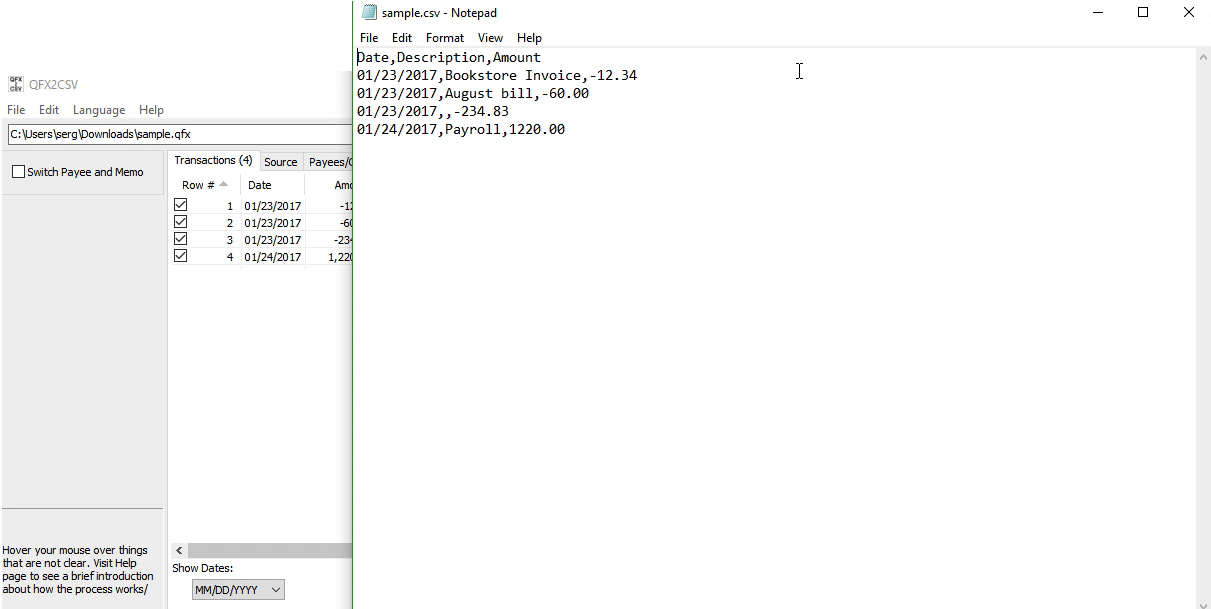
See this Windows tutorial as a video:
Step by step instructions for macOS
Make sure you are using the latest version of QFX2CSV. Download it from the QFX2CSV download page.

Review transactions before converting. Check that dates are correct, have the correct year, amount, withdrawals, and deposits are shown in corresponding columns.
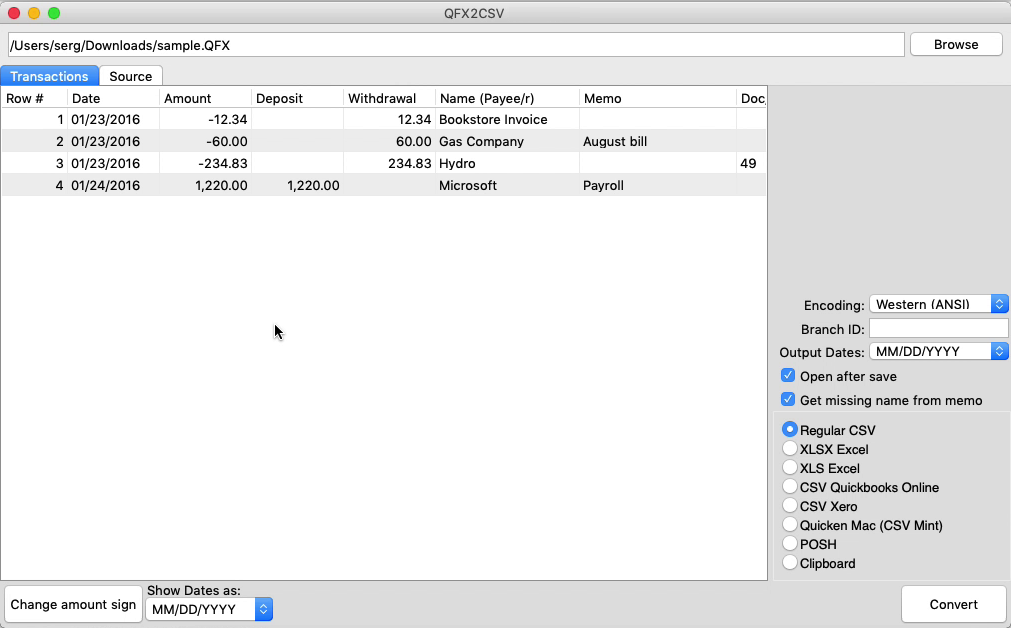
Choose the CSV target: Regular CSV, Excel (XLS or XLSX), Quickbooks Online, Xero, Quicken for Mac (CSV Mint), POSH or copy to clipboard to be pasted into any spreadsheet software like Excel.

Set 'Open after save' to open application handling converted files to start import right after the conversion.
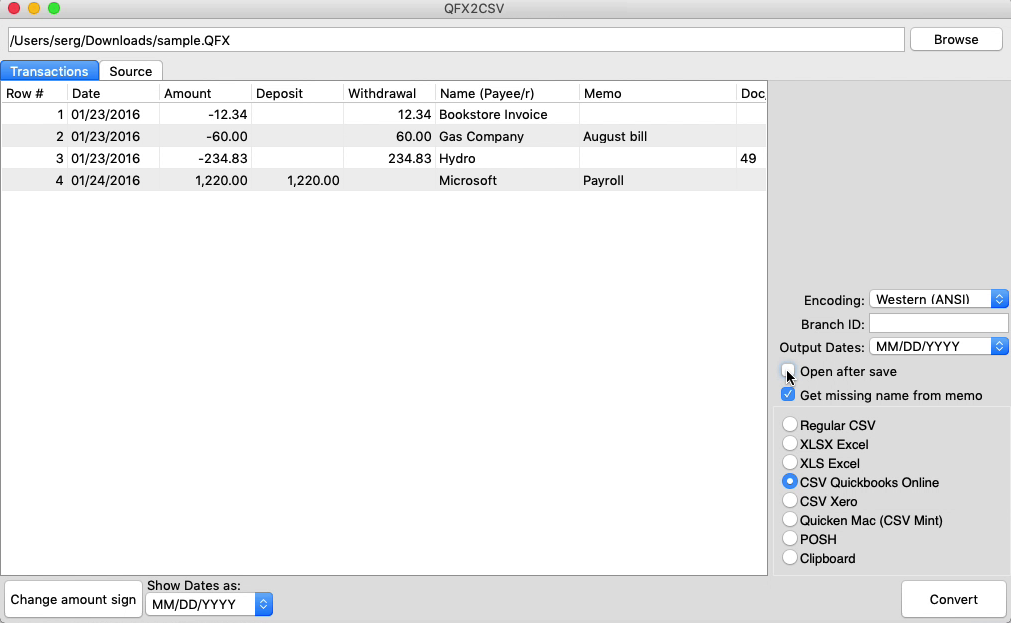
Click the 'Convert' button to create a CSV file.
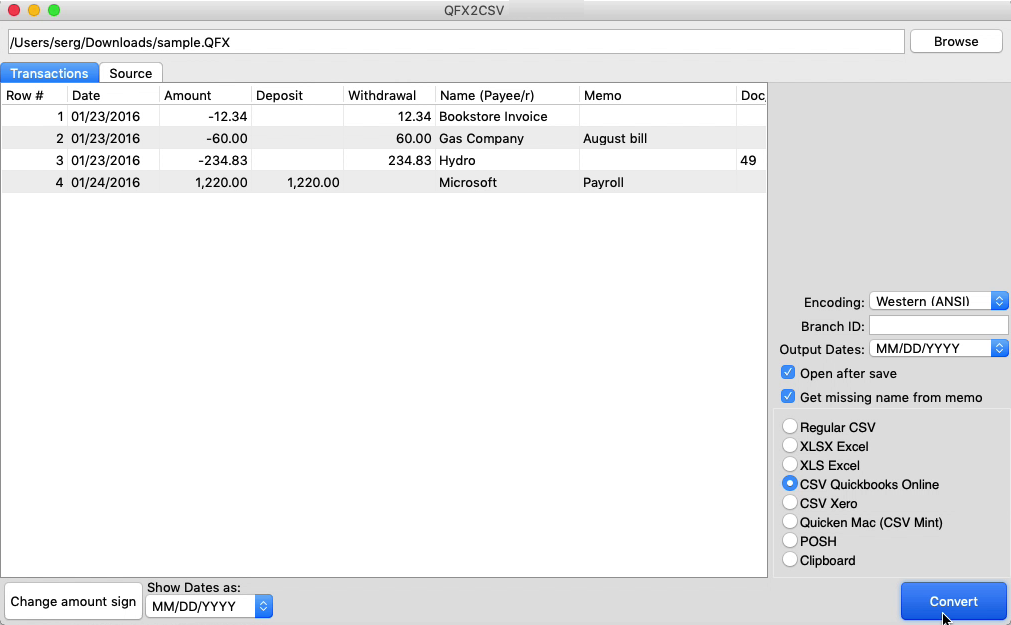
Confirm the file name and location.

Now the CSV file is created.

Review created CSV file and import it into Quickbooks Online, Xero or work with the file in Excel.
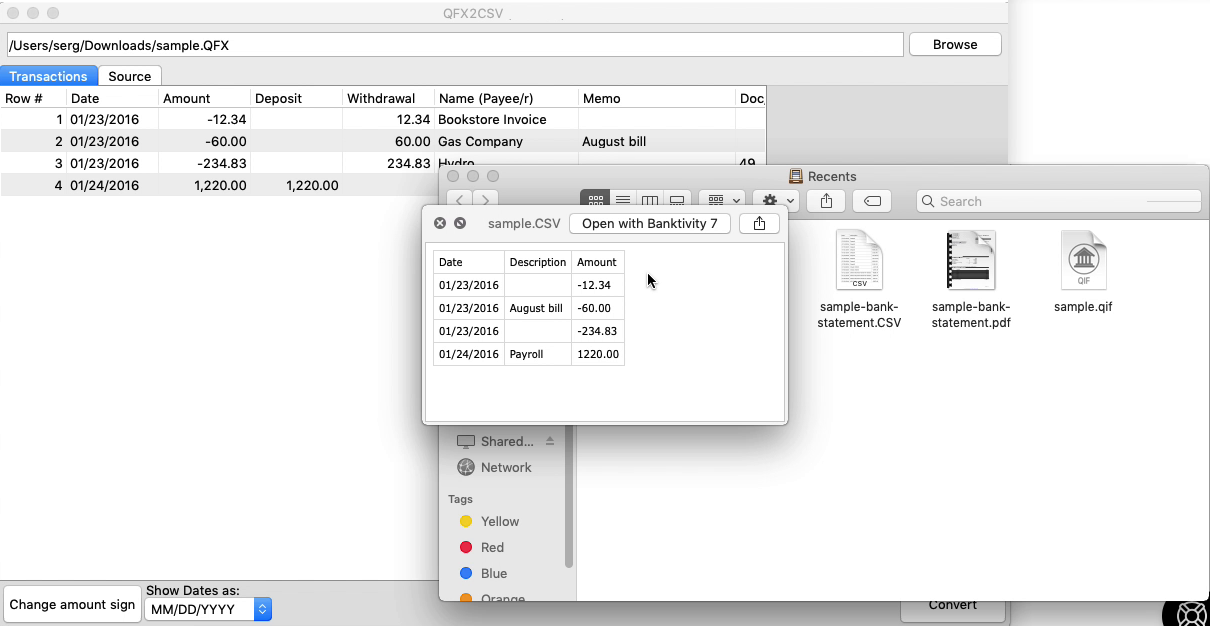
See this macOS tutorial as a video:
Related articles
- Convert QBO files to QIF and import into Quicken (QBO2QIF)
- Convert CSV/Excel to QBO and import into Quickbooks
- Convert CSV/Excel, PDF, QFX/OFX/QBO, QIF, MT940 to QIF and import into Quicken
- How To Use CSV2QIF
- Convert PDF to CSV/Excel (how to use PDF2CSV)
- Convert QIF to QBO and import into Quickbooks (QIF2QBO)
- Transactions: Make your transaction files importable into your accounting software